
Author: J.R. Lord, Geologist/Geochemist, Brisbane
Extract from National Rock Garden Newsletter No. 20, November 2020
The Kristall Galerie is an educational geoscience facility located in Swakopmund, on the coast of northwestern Namibia, about 280 km west of Windhoek, the capital and largest city of Namibia.
The Galerie was founded in 1998 and, according to its website, has the world’s largest quartz crystal cluster on display, as shown in the spectacular image below. The quartz cluster is from a pegmatite, an intrusive igneous rock with very large crystals that forms in the later stages of a magma chamber’s crystallization. Milky and smoky quartz form the bulk of the quartz core. Individual quartz crystals measure up to 2 m in length and 2 m in circumference (Schneider, 2020).
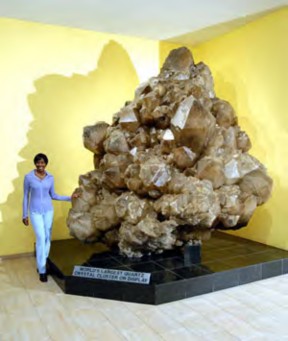
The source of these quartz clusters is a zoned, rare-metal pegmatite which was mined for its tourmaline in the Erongo Region of Namibia. The pegmatite has a strike length of approximately 2.3 km, dips almost vertically and its width ranges between 250 and 340 m (Roering, 1963).
Green tourmaline occurs together with the large quartz crystals and sometimes there are so-called “watermelon” tourmalines, a variety having a pink core and a green rim. The tourmalines are partly or totally enclosed by the quartz crystals (Schneider, 2020).
The quartz crystals from Otjua are often doubly terminated, thus identifying them as ‘floaters’, i.e. they grew while floating in the mineralizing fluid, rather that growing onto a surface. There is no record in the literature for the largest quartz ‘floater’ ever found but with a length of 2.2 m and a circumference of 1.8 m, it might well be that a floater from Otjua fits that title. One floater has an estimated weight of 1 ton and is part of a cluster displayed in the foyer of the Kristall Gallerie in Swakopmund (Schneider, 2020).
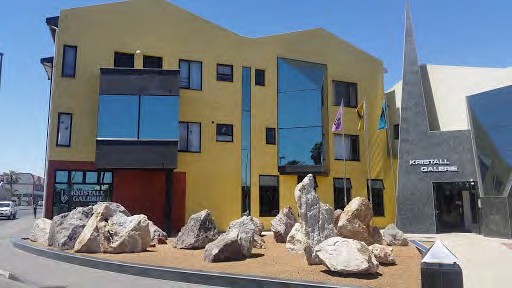
Outside the gallery there are several large quartzite boulders showing quartz veins that are a brilliant example of open-space filling, with successive generations of amethyst and white quartz growing from the vein edges towards the centre.
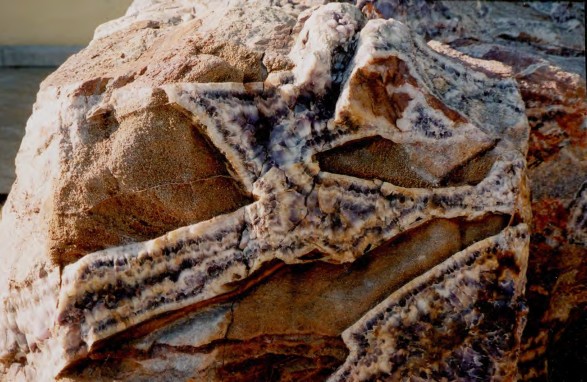
Similar open space fillings have been observed in rocks on display at the Natural History Museum in London and an example is shown below.
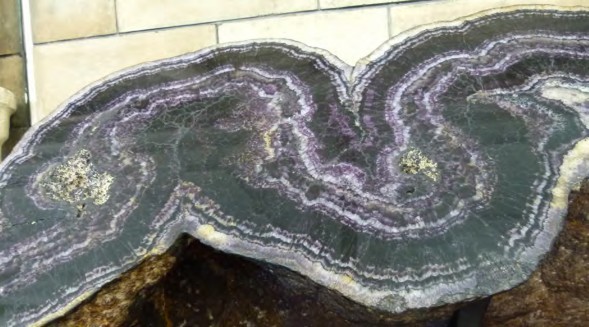
Readers will be familiar with similar textures growing into open space with geodes/thunder- eggs (see below).
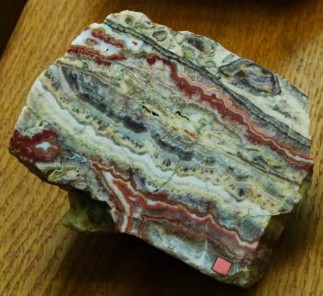
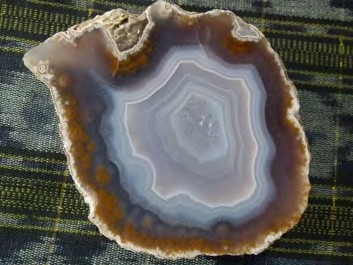
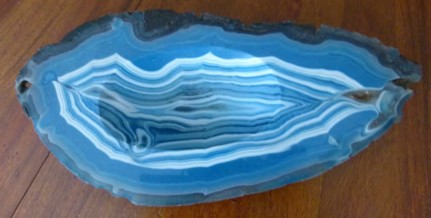
References
Roering, C., 1963. Pegmatite investigations in the Karibib District, South West Africa. Unpublished Ph.D. thesis, University of the Witwatersrand, 130 pp.
Schneider G., 2020. The Kristall Galerie houses the largest known crystal cluster in the world, http://www.namibiangemstones.com/index.php/about-us/largest-crystal-cluster.


